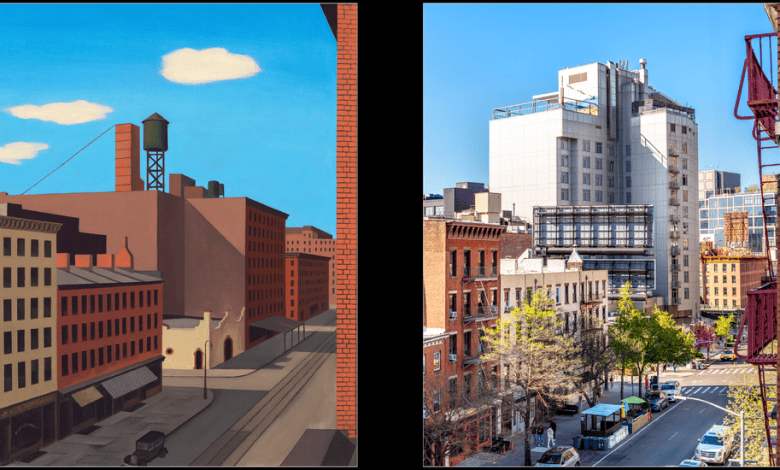The Whitney’s Then-and-Now Project Portrays a Changing City

Good morning. It’s Wednesday. We’ll look at paintings from the Whitney Museum of American Art — and what the places in New York that they depict look like today. We’ll also find out about the backlash over CUNY Law School’s decision not to have a student speak at its commencement ceremony.

George C. Ault’s painting “Hudson Street,” left, and a current photograph from the same location by Max Touhey.Credit…The Whitney Museum
On the way to work in the morning, have you ever looked up and wondered what the street that your office is on used to look like? What was there before the building you work in?
Questions like those flashed through the mind of a communications official of the Whitney Museum a couple of months ago. The answers are now online, in a then-and-now project that pairs paintings of long-ago New York City street scenes with photographs taken from where the artists had stood with their easels and palettes.
Or as close as Max Touhey, the photographer the Whitney brought in for the project, could get.
Sometimes he could not go into the buildings the artists had been in — or the buildings that replaced those buildings — so he used modern tools to see the scene from more or less the same angle. He flew a drone outside windows he was confident the artists had been looking through as they worked. Once, on Eighth Avenue at 4 a.m., he raised a 30-foot-tall tripod to the height of an apartment where a painter had lived.
The Whitney called the project “Putting Artists on the Map” because the museum created an interactive map as a tool to view the then-and-now pairings. But the title is also a play on the Whitney’s importance as a showcase for American art from the museum’s very beginning: Most of the “then” images were shown in the first Whitney Biennial, in 1932.
